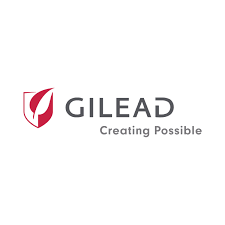FOSTER CITY, Calif.– Gilead Sciences, Inc. (Nasdaq: GILD) today announced interim results from the ongoing, multinational, observational single-arm, non-comparative real-world cohort BICSTaR study, which is designed to evaluate the antiviral effectiveness and safety profile of Biktarvy® (bictegravir 50 mg/emtricitabine 200 mg/tenofovir alafenamide 25 mg tablets, B/F/TAF) in 1,135 people living with HIV. The BICSTaR study also collected patient-reported outcomes in routine clinical practice to better understand the impact of treatment on health-related quality of life in people living with HIV. These data were presented at the 18th European AIDS Conference (EACS 2021).
Gilead presented an analysis of patient-reported outcomes after 12 months of treatment with Biktarvy from the BICSTaR study. During the study, conducted at sites in Europe, Canada and Israel, people living with HIV who initiated treatment with Biktarvy between June 2018 and September 2020 completed questionnaires at baseline and 12 months. The questionnaires assessed patient-reported outcomes covering a range of measures. The results underline the importance of collecting patient-reported outcomes in order to understand the impact on mental health status, health-related quality of life and treatment satisfaction of people living with HIV.
“Despite advances in antiretroviral therapy, people living with HIV experience burdensome multidimensional symptoms and concerns requiring person-centered care,” said Fernando Bognar, MD, Vice President, Medical Affairs, HIV at Gilead Sciences. “The patient-reported outcomes observed in the BICSTaR study provide a first-hand assessment of the impact of HIV treatment and care on the quality of life that people living with HIV experience. As physicians and people living with HIV look to understand what long-term treatment means to them individually, these data presented at EACS also reinforce that Biktarvy can meet the specific treatment needs of diverse groups of people, including men and women aging with HIV and those with existing comorbid conditions.”
In a second analysis of the BICSTaR study, 97% (n=149/154) of treatment-naïve adults and 96% (n=771/800) of treatment-experienced adults achieved and maintained virologic suppression (HIV-1 RNA <50 copies/mL) after one year of treatment. Participants included adults 50 years of age or older, cisgender women, and late presenters (CD4 <200 cells/μl and/or ≥1 AIDS-defining event at baseline). Both treatment-naïve and treatment-experienced participants had high persistence with Biktarvy (91%, n=1032/1135) across both groups, Biktarvy was generally well-tolerated and no resistance to the components of Biktarvy emerged. 148 (13%) participants had any adverse event and 2 (<1%) had a serious adverse event. The most common drug-related adverse events observed to date in the BICSTaR study were weight increase (3%), nausea (1%), depression (1%), headache (1%), fatigue (1%), diarrhoea (1%) and sleep disorder (1%). These large cohort findings continue to reinforce the real-world effectiveness of Biktarvy across populations and are consistent with evidence from randomized clinical trials.
Additional Biktarvy data presented at EACS 2021 include a Phase 3 trial (Study 1878) that demonstrated the durable efficacy of Biktarvy. In the study, 99% of people living with HIV who switched to Biktarvy from a boosted protease inhibitor-based regimen maintained and achieved long-term viral suppression through a median of 101 weeks (n=525/532), including 98% of participants with pre-existing resistance (n=212/217; median of 108 weeks) and 98% of participants with viral blips (n=39/40; median of 109 weeks), with no treatment-emergent resistance to Biktarvy. A pooled analysis of five Phase 3 studies (1844, 1878, 4030, 4449, 4580) also found that regardless of pre-existing TAMS (thymidine analog-associated mutations M41L, D67N, K70R, L210W, T215Y/F, and K219Q/E), a high proportion of those on Biktarvy were able to maintain virologic suppression and had an absence of treatment-emergent resistance. These data support the continued evaluation of Biktarvy as a potential option for virologically suppressed people living with HIV with known resistance. The use of Biktarvy in individuals with a history of treatment failure or known resistance to the components of Biktarvy is investigational, and the safety and efficacy of Biktarvy for this use have not been established.



